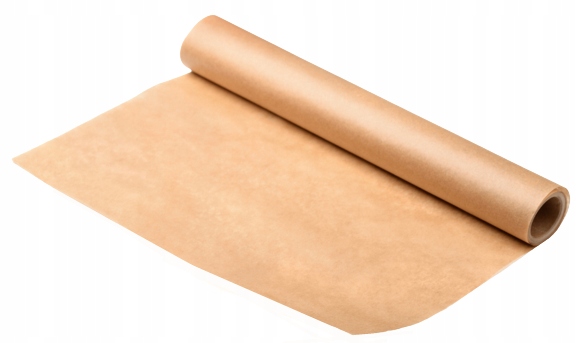Wax paper has been a staple in kitchens and food service for many years, serving various purposes from food storage to presentation. Its unique properties make it an ideal choice for enhancing the visual appeal of food while offering practical benefits. This article explores the role of wax paper in food presentation, including its features, uses, and advantages.
What is Wax Paper?
Wax paper is a type of paper that has been coated with a thin layer of wax, usually paraffin. This coating gives the paper a moisture-resistant quality, making it ideal for wrapping food items. Unlike parchment paper, which is treated to withstand high temperatures, wax paper is not heat-resistant and should not be used in the oven. However, its versatility in food presentation and storage makes it a valuable asset in both home kitchens and professional food service.
Enhancing Visual Appeal
One of the primary roles of wax paper in food presentation is its ability to enhance the visual appeal of dishes. When used as a decorative layer, wax paper can add a touch of elegance to food displays. Its smooth surface allows for easy printing of designs or logos, making it popular for catering events and restaurants that want to create a branded experience.
Color and Design
Wax paper comes in various colors and patterns, allowing chefs to choose options that complement the food being served. For example, bright colors can highlight vibrant dishes, while subtle patterns can add sophistication to more understated meals. By using wax paper creatively, chefs can elevate the overall dining experience.
Practical Uses in Food Presentation
In addition to its aesthetic benefits, wax paper serves several practical purposes in food presentation. It is commonly used for wrapping sandwiches, pastries, and other items, providing a convenient way to serve food while keeping it fresh.
Wrapping and Packaging
When food is prepared for serving, wrapping it in wax paper can help maintain its temperature and texture. For sandwiches, wax paper keeps bread from becoming soggy while allowing some steam to escape. This is particularly important in settings like delis or food trucks, where speed and quality are essential.
Layering and Separating
Wax paper can also act as a separator between different food items on a platter. This is especially useful when serving appetizers or charcuterie boards, as it prevents flavors from mingling and keeps items looking organized. By layering wax paper between items, chefs can create visually appealing presentations that are also practical for serving.
Wax Paper in Catering and Events
In catering and event planning, presentation is key. Wax paper is often used to enhance the visual appeal of food served at parties, weddings, and corporate events. Its versatility allows caterers to create unique presentations that align with the theme of the event.
Custom Branding
Many catering companies choose to use custom-printed wax paper featuring their logo or branding. This not only elevates the presentation but also serves as a marketing tool. Guests are more likely to remember a catering service that presents food in an attractive and branded manner.
Themed Decorations
For themed events, wax paper can be designed to match the occasion. For example, for a summer picnic, bright floral patterns can add a festive touch, while elegant designs may be more suitable for formal gatherings. This attention to detail enhances the overall atmosphere and experience for guests.
Environmental Considerations
As consumers become more environmentally conscious, the choice of materials used in food presentation is increasingly important. Wax paper is generally considered a more eco-friendly option compared to plastic. It is biodegradable and can often be composted, making it a suitable choice for environmentally responsible food service.
Sustainable Sourcing
Many companies are now producing wax paper from sustainable sources, further reducing the environmental impact. By choosing products made from recycled paper or sourced from responsibly managed forests, businesses can align their practices with sustainability goals.
Limitations of Wax Paper
While wax paper offers numerous benefits, it is important to recognize its limitations. The most significant drawback is its inability to withstand high temperatures. Wax paper should never be used in the oven or microwave, as the wax can melt and potentially contaminate food. This limitation makes it less versatile compared to other types of food-safe paper.
Not for All Foods
Certain foods, especially those with high moisture content or greasy surfaces, may not be ideal for wrapping in wax paper. For example, items like fried foods can leave oil stains on the paper, detracting from the overall presentation. In such cases, alternative wrapping materials should be considered.
Creative Uses of Wax Paper in Food Presentation
Beyond traditional uses, there are many creative ways to incorporate wax paper into food presentation. Chefs and home cooks alike can experiment with different techniques to make their dishes stand out.
DIY Food Cones
One popular trend is to create DIY food cones using wax paper. This fun presentation method is perfect for serving snacks like popcorn, fries, or even desserts like candies and small pastries. Simply roll a piece of wax paper into a cone shape and secure it with tape or a decorative ribbon. This not only adds visual interest but also makes for easy handling.
Wax Paper Wraps
Another innovative use of wax paper is to create wraps for individual portions of food. This is particularly useful for baked goods, such as cookies or brownies. Wrapping them in wax paper and tying them with twine or ribbon creates a charming presentation that is perfect for gift-giving or serving at events.
Layered Displays
For larger gatherings, consider using wax paper as a base for layered displays. For example, when serving a charcuterie board, you can lay down a sheet of wax paper to define sections for cheeses, meats, and fruits. This not only organizes the platter but also adds a stylish touch.
Conclusion
Wax paper plays a crucial role in food presentation, offering both aesthetic and practical benefits. Its versatility, unique properties, and environmental considerations make it an ideal choice for chefs and food service professionals looking to elevate their culinary creations. Whether used for wrapping, layering, or creative displays, wax paper enhances the overall dining experience, helping to create memorable moments for guests. As food presentation continues to evolve, the use of wax paper will likely remain a popular choice in kitchens and catering events around the world.



